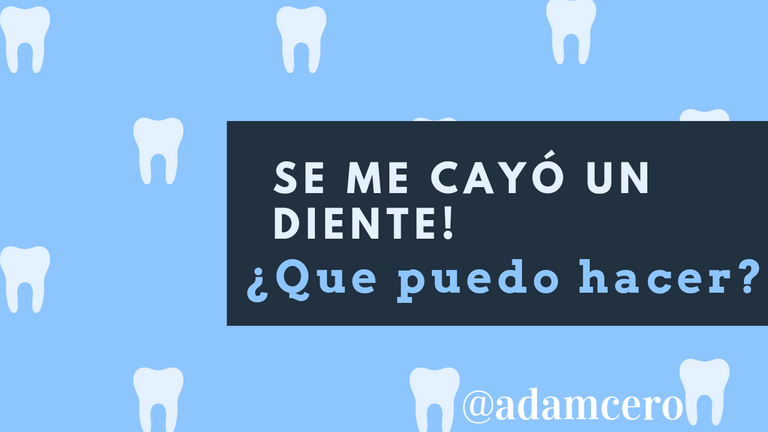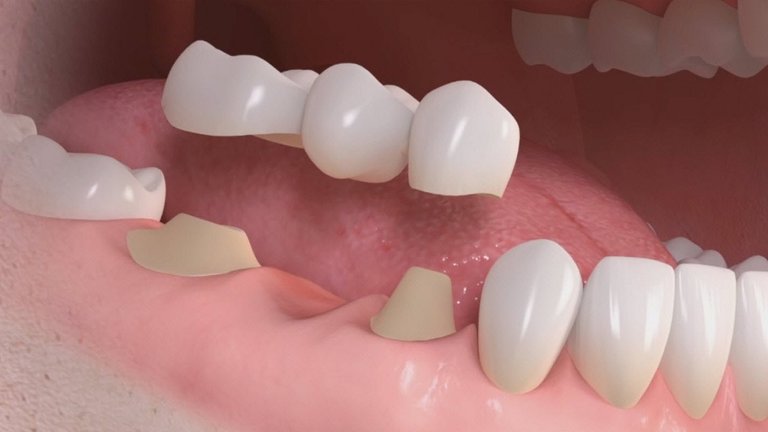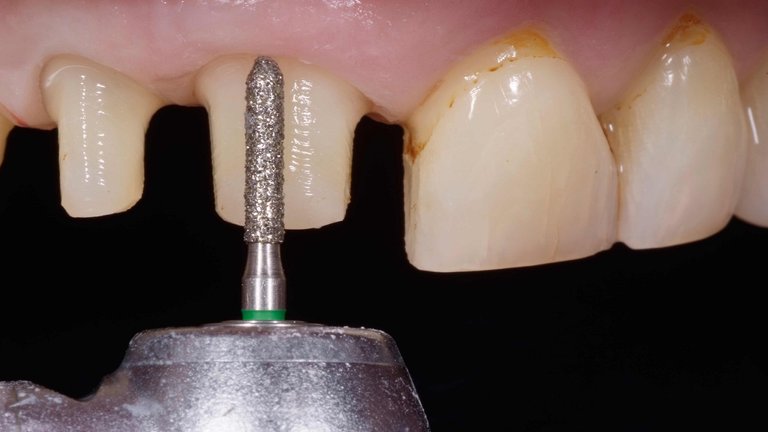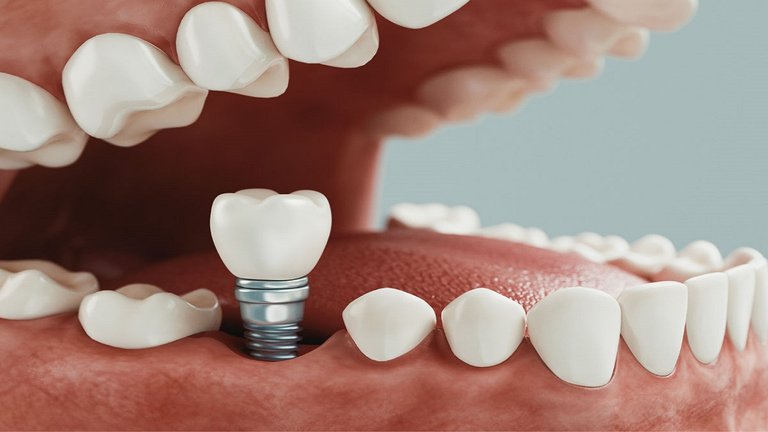
Saludos, comunidad. Hoy compartiré con ustedes mi punto de vista sobre las prótesis fijas "coronas", no cabe duda que desde el punto estético son de las mejores, emulando de manera perfecta la estructura dentaria. El paciente con este tipo de prótesis se siente muy cómodo ya que a diferencia de la prótesis removible no debe retirarla.
¿Qué es una prótesis fijas?
La prótesis fijas, como su nombre lo indica, es una prótesis que se instala en la cavidad bucal para sustituir un diente ya sea ausente o muy dañado. se coloca Mediante el tallado de dientes vecinos para posteriormente colocar una corona dentaria de material metal-porcelana. En caso de que el diente este muy dañado con poca estructura, se coloca un perno de fibra de vidrio, se reconstruye parte del diente para luego colocar la corona. Personalmente creo que este es el único caso dónde las prótesis fijas son excelente.
Greetings, community. Today I will share with you my point of view about the fixed prosthesis "crowns", there is no doubt that from the esthetic point of view they are the best, perfectly emulating the tooth structure. The patient feels very comfortable with this type of prosthesis because, unlike the removable prosthesis, he/she does not have to remove it.
¿What is a fixed prosthesis?
The fixed prosthesis, as its name suggests, is a prosthesis that is installed in the oral cavity to replace a tooth either missing or badly damaged. It is placed by grinding neighboring teeth to subsequently place a dental crown of metal-porcelain material. In case the tooth is very damaged with little structure, a fiberglass pin is placed, part of the tooth is reconstructed and then the crown is placed. I personally believe that this is the only case where fixed prostheses are excellent.

¿Son buenas las prótesis fijas ?
Desde mi perspectiva, ninguna prótesis que deba involucrar la disminución de la estructura dentaria sana es buena, ya que estaríamos comprometiendo al diente a futuro. El tallado de estás prótesis suele ser agresivo, es decir, se elimina mucha estructura dentaria para poder colocar la corona.
En mi consulta he visto como pacientes con coronas fijas llegan con dientes ya perdidos, debido a que existen pacientes que son más susceptibles a las caries dentarias y esto afecta a los pilares de las coronas siendo en algunos casos fatal, ya que el paciente intentando restaurar un diente puede llegar a perder más piezas dentarias.
Pasos para instalar una prótesis fijas
Primero se debe tallar los pilares; estos son los dientes que se encuentran lateral al espacio edentulo " zona sin diente". Luego de el tallado, se toma impresión con un material especial que copia a detalle la cavidad bucal. Por último se fija la corona, este paso es importante ya que si se fija mal la corona, pueden crear consecuencias a futuro, como acumulación de alimentos que posteriormente puede terminar en caries
¿Are fixed prostheses good?
From my perspective, no prosthesis that should involve the reduction of healthy tooth structure is good, since we would be compromising the tooth in the future. The grinding of these prostheses is usually aggressive, that is, a lot of tooth structure is removed in order to place the crown.
In my practice I have seen how patients with fixed crowns arrive with teeth already lost, because there are patients who are more susceptible to tooth decay and this affects the abutments of the crowns being in some cases fatal, since the patient trying to restore a tooth can lose more teeth.
Steps to install a fixed prosthesis
First the abutments must be carved; these are the teeth that are lateral to the edentulous space "toothless zone". After the carving, an impression is taken with a special material that copies in detail the oral cavity. Finally the crown is fixed, this step is important because if the crown is badly fixed, it can create consequences in the future, such as accumulation of food that can later end up in cavities

¿Entonces qué puedo hacer si quiero un diente fijo ?
En la actualidad existe un tratamiento capaz de sustituir dientes ausentes sin la necesidad de realizar un desgaste en dientes sanos: los implantes dentarios. Consiste en colocar un tornillo dentro del hueso alveolar y encía. Este procedimiento es a través de una cirugía la cual debe ser realizada por un cirujano maxilo facial o un especialista. En lo personal, es la mejor opción ya que estéticamente y Funcionalmente tendría la misma fuerza que un diente natural y el paciente se sentiría más cómodo con ella.
¿So what can I do if I want a fixed tooth?
Currently there is a treatment capable of replacing missing teeth without the need to wear down healthy teeth: dental implants. It consists of placing a screw into the alveolar bone and gum. This procedure is done through surgery which must be performed by a maxillofacial surgeon or a specialist. Personally, it is the best option because aesthetically and functionally it would have the same strength as a natural tooth and the patient would feel more comfortable with it.

¿Existe otra alternativa de prótesis aparte de la fija ?
Existen prótesis removibles que en la actualidad son muy esteticas, de un material acrílico flexible y de color muy parecido a la encía. Esta es una buena opción para pacientes con poco presupuesto. Es necesario colocar una prótesis en espacios edentulos ya que más allá de ser estético, su función más importante es mantener los espacios de la cavidad bucal y evitar que dientes se desplacen cambiando la mordida; esto sería una consecuencia fatal para el paciente.
¿Is there any alternative prosthesis other than the fixed one?
There are removable prostheses that are currently very aesthetic, made of a flexible acrylic material and very similar in color to the gum. This is a good option for patients with little budget. It is necessary to place a prosthesis in edentulous spaces because beyond being aesthetic, its most important function is to maintain the spaces of the oral cavity and prevent teeth from shifting by changing the bite; this would be a fatal consequence for the patient.

No cabe duda que la odontólogia a evolucionado a pasos agigantados, al punto de que ya es posible implantar dientes artificiales sin necesidad de desgastar dientes sanos. Espero hayan disfrutado este artículo ¡hasta la próxima!
There is no doubt that dentistry has evolved by leaps and bounds, to the point that it is now possible to implant artificial teeth without the need to wear down healthy teeth. I hope you enjoyed this article, ¡see you next time!

- La portada de esta publicación fue realizada en canva en su versión gratuita.
The cover of this publication was made in canva in its free version.
- El texto ha sido traducido por Deepl en su versión gratuita
The text has been translated by Deepl in its free version
Congratulations @adamcero! You have completed the following achievement on the Hive blockchain and have been rewarded with new badge(s):
Your next target is to reach 100 upvotes.
You can view your badges on your board and compare yourself to others in the Ranking
If you no longer want to receive notifications, reply to this comment with the word
STOPTo support your work, I also upvoted your post!
Check out the last post from @hivebuzz:
Support the HiveBuzz project. Vote for our proposal!